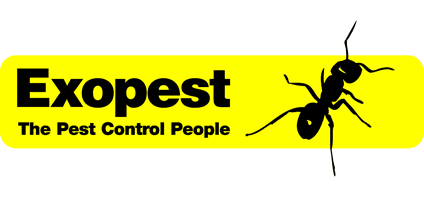Spider Control Melbourne from Exopest Control What are they? We are all generally familiar with spiders having 8 legs and usually associated with webs. However there are a hundreds of different species; some that should concern us and others that cause no harm. Spiders are invertebrates (no skeleton) and grow by shedding their skin or cuticle. Their bodies are in 2 parts; head and abdomen. All spiders make silk and all spiders bite in order to feed. Some spiders have venom that is dangerous to man (Sydney funnel-web, Redback etc) and all spiders grow from an egg; some even carried on the back of the female. The female spider is normally larger than the male. In domestic situations Redback spiders and whitetails are generally regarded as harmful and whilst Huntsman spiders are large, fast and look menacing, the fact is no spider tends to bite unless provoked. Huntsman are actually very good predators of small insects in the home and clean up many unwanted biting insects. When to treat? At Exopest we would like to explain that a spider treatment in general these days will only effect web spinning spiders, since we are able to sight the webbing and apply pesticide directly to their harbourage and webs. Exopest do not recommend spraying for ground dwelling spiders, eg trap door spiders, wolf spiders Unfortunately nomadic spiders such as Huntsman and whitetails do not have webs. They hunt their prey and roam from area to area. Spiders are affected when a pesticide is absorbed through their body surface (Cuticle). Therefore when we apply residual chemicals to surfaces we cannot rely on these Nomadic spiders coming in contact with the spray unless they decide to rest down on the treated surface, which is very rare. There is no web to return to and should they not be directly sprayed during the treatment they can simply walk into the building with no ill affect. We therefore can't guarantee spiders will not enter the building after spraying. We suggest you spray the spider directly with a surface spray; or vacuum them up or place in a container using gloves and place outside should they enter after a treatment. Exopest Spider treatment Our treatment will usually involve the application of a pesticide dust to the roof void, in and around cavities of external windows and doors etc, and under the building (if access is available). Very safe synthetic pyrethroids are applied to internal skirtings and other likely harbourages. The external perimeter walls, eaves, verandahs, etc and spider webs are all also sprayed. Please leave the spider webs for a couple of weeks before removing to allow the treatment to work fully. Clotheslines, which should be clothes free, are treated along with outbuildings and letterboxes along with any pot plants and other likely spider harbourages. It maybe necessary to vacate for up to 2-4 hours if a misting is recommended by the Exopest technician to knock down the spiders already inside. Treatment and Control The best way to deal with these spiders inside the building or house is to use some common sense. Be aware of places they like to hide, do not leave clothes on floor or shake them thoroughly before putting them on and check bedclothes before going to bed. The spiders are more active at night so they are more likely to be seen then. Either catch the spiders and put them outside or kill them by squashing or spraying with household insecticide. It should not be necessary to employ a professional pest company to spray or fumigate your house or building solely for the control of White-tailed spiders. However, it can help reduce numbers and will kill them should they rest down onto a treated surface before entering the building. Should you wish to have professional help, please call us.
|
03 8696 9000 80-86 Buckhurst St, South Melbourne, Vic, 3205
|


 Flea Control Melbourne by Exopest
Flea Control Melbourne by Exopest Bed Bugs Treatment Program by Exopest
Bed Bugs Treatment Program by Exopest Rodent Pest Control Melbourne by Exopest
Rodent Pest Control Melbourne by Exopest Spider Pest Control by Exopest
Spider Pest Control by Exopest Pest Protection Plan for Businesses by
Pest Protection Plan for Businesses by Cockroach Control Melbourne by Exopest
Cockroach Control Melbourne by Exopest Termite Inspection and Treatment by
Termite Inspection and Treatment by Long Lasting Termite Management Systems
Long Lasting Termite Management Systems Home Protection Plan by Exopest
Home Protection Plan by Exopest Tamper Proof Rodent Bait Stations from
Tamper Proof Rodent Bait Stations from Improve Subfloor Ventilation in
Improve Subfloor Ventilation in Termite and Pest Control for Homes
Termite and Pest Control for Homes Tamper Proof Bait Stations for Rodent
Tamper Proof Bait Stations for Rodent Termite Control in Construction by
Termite Control in Construction by Eco Friendly Subfloor Ventilation for
Eco Friendly Subfloor Ventilation for Effective Bedbugs Infestation Control
Effective Bedbugs Infestation Control Termite and Pest Management Experts |
Termite and Pest Management Experts | Homeguard Termite Membranes From Exopest
Homeguard Termite Membranes From Exopest Termite Pest Control and Management
Termite Pest Control and Management Scheduled Commercial Pest Control by
Scheduled Commercial Pest Control by
